NATO Has Been Training Ukrainian Forces for Years
A fascinating report from the WSJ.
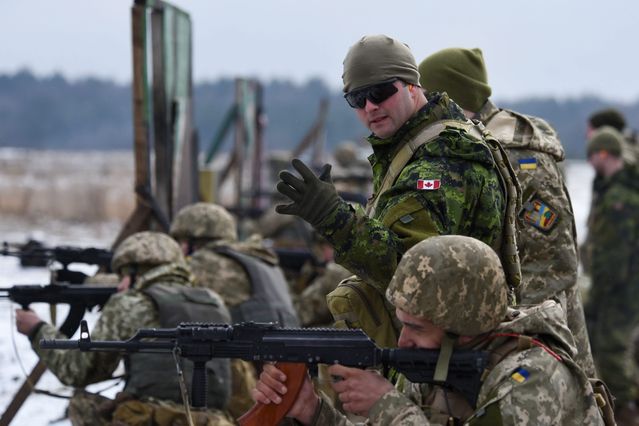
WSJ Brussels Bureau Chief Daniel Michaels reports that “The Secret of Ukraine’s Military Success [is] Years of NATO Training.”
When Ukrainian National Guard Lt. Andriy Kulish ambushes Russian forces, he thanks the Canadian army.
The Canadians trained Lt. Kulish’s Rapid Response Brigade last summer in urban warfare, field tactics and battlefield medicine. The exercise in western Ukraine was one of the many in recent years with troops from Canada, the U.K., Romania and the California National Guard.
This was just one piece of a little-publicized effort by countries of the North Atlantic Treaty Organization that transformed Ukraine’s military up and down the ranks, from foot soldiers to the defense ministry to overseers in parliament. It is one big reason why Ukraine’s nimble fighting force has surprised the world by fending off a much larger and better-equipped invading army, say Ukrainians and their Western advisers.
Through classes, drills and exercises involving at least 10,000 troops annually for more than eight years, NATO and its members helped the embattled country shift from rigid Soviet-style command structures to Western standards where soldiers are taught to think on the move.
In confounding Russian invaders today, Lt. Kulish says his comrades-in-arms “are definitely using procedures they learned during the training with NATO.”
The Western assistance, while never secret, wasn’t trumpeted to avoid riling Russia. It also remained low-key because it was a valuable source of intelligence for the U.S. and its allies. Ukraine has been fighting a shooting war with Russian-backed separatists in parts of its east for years, meaning Kyiv fields some of Europe’s most battle-hardened soldiers. Their front-line experience made them sponges for NATO training—and offered NATO commanders a window into what it would be like to fight Russia, say Western officers involved in the programs.
By the time Russia invaded on Feb. 24, training of Ukrainian forces had become so extensive that, although at least eight NATO countries participated, much of the hands-on training was being done by Ukrainian instructors. To NATO commanders, that was a sign Ukraine had internalized their teachings.
“The lesson learned is that support and help over many years had a significant impact,” says NATO Secretary-General Jens Stoltenberg.
This is phenomenal but begs an obvious question—which Michaels anticipated:
NATO’s work in Ukraine was also more successful than comparable Western efforts in Iraq and Afghanistan. Advisers credit this to Ukraine’s relatively cohesive society and a recognized central government supported by bureaucracies that, while often inefficient and plagued with corruption, still embodied a unified state. Perhaps most significant, Ukraine had a clear foreign enemy to fight following Russia’s 2014 seizure of the Crimean Peninsula and military support for a rebellion in the country’s east.
Regardless, the irony is rich:
Russian President Vladimir Putin, in launching his invasion of Ukraine, cited the country’s possible membership in NATO as a reason for attacking. Ukrainian President Volodymyr Zelensky has since proposed renouncing that ambition. Whatever the outcome, say Ukrainians and Western advisers, Kyiv’s forces have learned to wage war along NATO’s rules, and are showing it with battlefield successes.
Ukraine’s skirmishing units are the spearhead of a completely rebuilt military establishment. NATO advisers brought with them concepts novel to Ukraine’s Soviet-style force including civilian control of the military, professional inspectors, external auditors and logistics specialists.
Abandoning the emphasis on numbers of soldiers and weapons, NATO advisers instilled the concept of capacity building, where commanders set goals and ensure they have troops and weapons needed to achieve them.
We were never able to do that in Iraq, much less Afghanistan.
Interestingly, this hits at a key critique military analysts have hit on in explaining why Russia has fared so poorly:
To advance the approach, NATO introduced the idea of noncommissioned officers: experienced soldiers promoted to ranks of authority who serve as vital links between top brass and ground troops. NATO countries also helped Ukrainian military leaders adopt an approach called mission command, where higher-ups set combat goals and devolve decision-making as far down the chain of command as possible, even to individual soldiers.
In the Soviet approach, still widely used by Russia, senior officers give orders that foot soldiers have little room to discuss or adapt.
“That made a big, big difference,” says former defense minister Andriy Zagorodnyuk. “NCO reform and mission command raise the effectiveness of your forces by many times.”
It’s a huge force multiplier. It means that the mission goes on if an officer is killed or incapacitated and that even junior soldiers understand why they’re fighting and can make decisions accordingly.
And, of course, more senior Ukrainians know their enemy quite well.
Lt. Kulish says the training is doubly effective because Ukrainians know Soviet military thinking.
“The Russians are using their typical tactics, which haven’t much changed since Stalin’s times,” he says. First comes artillery salvos. “Then they throw loads of meat to take our positions,” he says, referring to Russian soldiers. The Ukrainians, in contrast, are unpredictable and agile. “We bring chaos to their ranks,” he says.
This didn’t just start yesterday:
The work to develop those skills began inauspiciously in 2008. Russia had invaded Georgia, prompting NATO to extend to it and Ukraine vague invitations for membership. The alliance drafted a 70-page action plan spelling out “Ukraine’s strategic course of Euro-Atlantic integration,” essentially a road map for Kyiv to meet NATO’s democratic standards, including a more professional, civilian-controlled military. Those efforts gained little traction due to weak support in the West and resistance within Ukraine’s still-Soviet-style military.
Russia’s routing of Ukrainian forces in 2014 jolted Kyiv. Then-President Petro Poroshenko ordered a military transformation, energizing the NATO effort. Western officers focused their attention on a 150-square-mile military training facility in the city of Yavoriv, 10 miles east of Ukraine’s border with Poland, which itself had transformed into a postcommunist leader within the alliance.
In a sign of how significant the Yavoriv center eventually became, Russia in mid-March targeted it with a missile strike, killing 35 people.
And the proxy war didn’t just start five weeks ago:
The first priority in 2014 was helping Ukrainian troops fight Russian proxies in the east. NATO launched courses in battlefield medicine, civil emergency planning and countering Russian hybrid warfare, from drones to phone-hacking. Western officers began drilling Ukrainian National Guard troops in modern combat tactics, prompting Ukrainian army officials to request similar training, recalls a senior U.S. defense official.
In Kyiv, government officials worked with NATO advisers to prepare deeper changes. Advisers from the U.S., U.K. and other NATO countries explained that to make Ukraine’s military more effective, its entire management had to change.
Advisers found problems at all levels, such as parallel military and civilian medical systems that required an act of parliament to be permitted to cooperate, recalls retired Col. Liam Collins, a former U.S. Army Special Forces officer.
U.S. officials repeated defense department mantras, like “It’s not the plan, it’s the planning.”
When Soviet-trained officers and bureaucrats resisted changes, advisers tried to work around them, says Kristopher Reeves, a Canadian army colonel who led his country’s branch of the training from 2017 to 2018.
“We focused on leaders who could use our energy and multiply it,” says Col. Reeves.
By the time he left, training sessions at Yavoriv had grown from companies of 150 soldiers to battle groups entailing more than 400 troops. Ukrainians began replacing Western soldiers in leading combat simulations.
“The second-best thing to being in combat is teaching it,” says Col. Reeves, of how militaries learn.
Annual exercises orchestrated at Yavoriv by the U.S. Army, dubbed Rapid Trident, let Ukrainian troops practice with forces from up to a dozen countries. Lt. Kulish, whose unit is now defending the city of Rubizhne, says skills including explosives handling and field tactics acquired at the exercises since 2016 helped his rapid reaction brigade fight in Donbas over recent years.
There’s a whole lot more but it’s really a phenomenal success story.

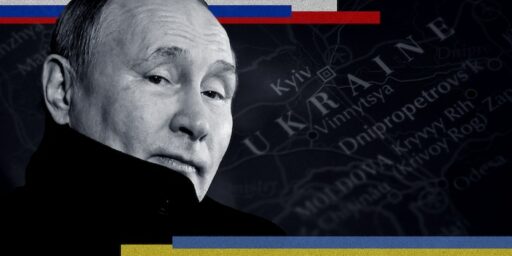
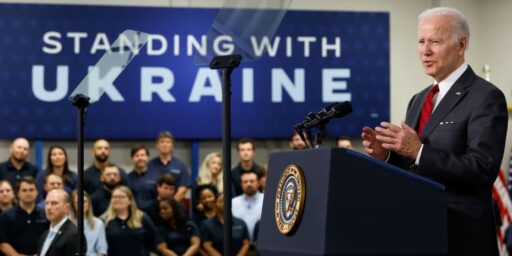
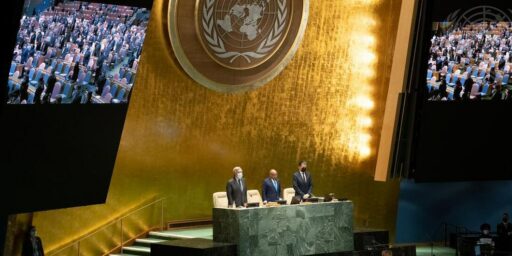

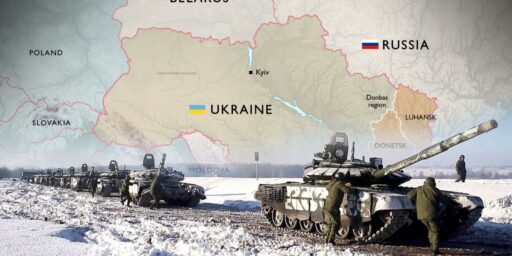
Yeah, the Russian bear knows one big thing, the Ukrainian fox, many little things.
@sam: Arquilla’s insights are always worth paying attention to.
There was another recent article on US Green Beret’s training UA special ops teams on tactics and techniques that ISIS, the Taliban and other insurrectionist movements have used against the US. The writer contended that this ability will be a special kind of hell for the Russians, as they have little or no experience in contending with this and their operational philosophy makes their troops particularly vulnerable.
I wonder how the Chinese are taking all this, since the PLA is, if anything, more “sovietized” than the Russian army. And the Taiwanese are being trained by us.
Fifty years ago my 6th grade teacher was a WWII NCO who sometimes veered from the lesson plan to tell us war stories. One of his standard set pieces involved talking about how the Germans were magnificent as long as their chain of command held, but lacked the ability to improvise when things broke down. To hear him tell it, the Germans were so conditioned to follow orders whether or not they understood them that they could not function without being told what to do, while his GIs were used to thinking for themselves and responded accordingly.
When, as an adult, I thought back on his tales I assumed that a lot of what he told us was well-intentioned propaganda designed to make us value American democracy, and that there probably wasn’t much truth to it. Now I read things like this and wonder if I undersold him. How long has this “mission command” approach been a part of the U.S. military?
This is a wonderful post James!! Over the past several years, I have sometimes noticed that it is not just certain members of the GOP that sometimes questions the need for NATO in these modern times, even “liberals/progressives” might get a bit wobbly in declaring that NATO is an invaluable organization and friend to most of the modern free world. This article just provided a massive reason why NATO should be strengthened and remain a potent organization for decades to come.
NATO puts in the long hard work of helping other countries prepare for the unfortunate situation that Ukrainians find themselves in, up against a superior military force (at least on paper) but now able to not just hold their ground, but take the fight to Russia in the form of destroying hardware such as tanks, damaging ships, and even hitting some ammo/fuel depots inside the Russian border (if certain reports are to be believed).
8 years, let me repeat this…NATO and Ukrainian forces have been working together for over 8 years! We just had a President who wanted instant gratification and I cannot imagine that if Trump was President 8 years back that he would have set a relationship in motion that would still be going strong 2-3 years after he started things up, much less after 8 years have passed, just amazing.
Trump would have balked at the expense of NATO working to train so many Ukrainian forces (he would declare that since the U.S. contributes the most to NATOs budget, that it is our money being wasted, and the joint training operation should be stopped as a cost saving measure, I can picture Trump doing/saying this to his friends in Congress).
Which begs the question, how incredible it also is that something like this was kept off of Trump’s radar screen, here NATO was training Ukrainians for a possible conflict with Russia, the same Ukrainians that he wanted to pressure into doing him a favor to hurt Biden prior to giving them any military assistance/funds to use in a potential fight against Russia. I would love to know how that was pulled off.
Maybe the Pentagon chose to be quiet about the joint training exercises they knew were going on for years and not say anything to Trump, and knowing how Trump felt about NATO (always ignoring them or wanting to defund them) realized that Trump would never bother to ask why a small cities population of Ukrainians were participating in joint training exercises put on by NATO and using Canadian and U.S. troops (yay CA National Guard)?
While this statement is not quite accurate, as no one has “won” anything yet, but you just have to think to yourself after reading this post that slow and steady wins the race.
@Roger:
What I’ve read on the WW2 German army indicates they fell between the two:
Privates were trained to just “shut up and soldier”, but the NCO’s were encouraged and expected to exercise initiative in pursuit of mission goals, and to be briefed by officers on what those objectives were.
@Roger: @JohnSF: Indeed, my friend John. The conventional wisdom is that German small unit management was actually superior to allies’ until very late in the war.